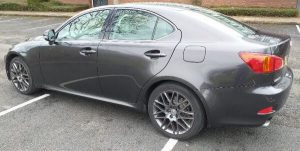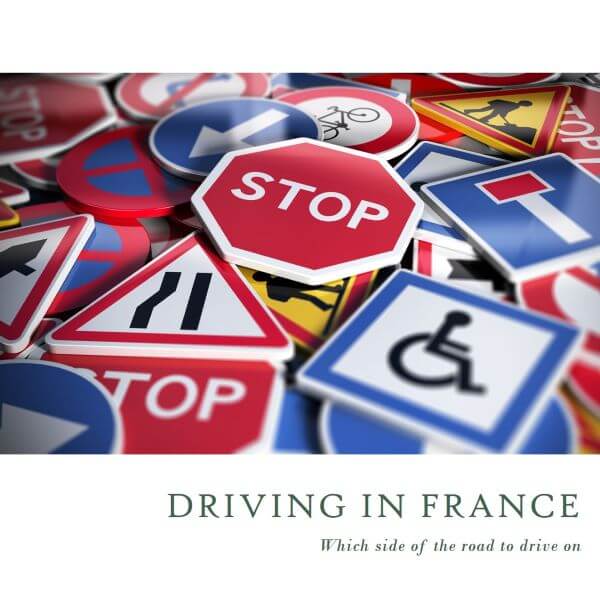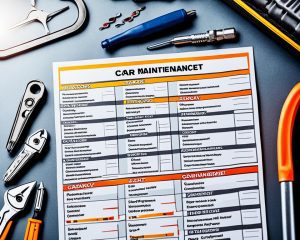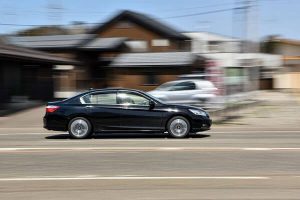Introduction
Navigating the French roads is very easy. They drive on the right hand side, so if you’re from the USA or any other mainland European country it will be a piece of cake.
If you’re visiting from the UK (where they drive on the left) it will take a bit of getting used to.
Knowing the unique road signs and markings is key for following directions. The Drive-France website has a great page on “French Road Signs“.
To make it easier, rent a car with an automatic transmission. Also, an international driver’s permit is helpful for law enforcement. It serves as an official translation of your driver’s license. So, get prepared before your road trip!
Table of Contents
- Introduction
- Overview of Driving in France
- Driving on the Right Side of the Road
- Comparison with Other Countries
- Challenges and Tips for Right-Side Driving in France
- Safety Measures and Precautions
- Conclusion
- Frequently Asked Questions
- Read our Latest Articles here:
Overview of Driving in France
Driving in France: An Informative Overview
Driving in France can be an exciting and convenient way to explore the country. To ensure a smooth experience, it’s important to familiarize yourself with the unique aspects of driving in this beautiful country.
- Driving Side: In France, vehicles drive on the right-hand side of the road, similar to many other European countries. This means the driver’s seat is on the left side of the car. It’s essential to stay aware of this change if you are accustomed to driving on the opposite side.
- Speed Limits: Speed limits in France vary depending on the type of road you are traveling on. On highways (autoroutes), the maximum speed limit is 130 km/h (80 mph), while on country roads it is 80 km/h (50 mph), and in urban areas, it is typically 50 km/h (31 mph). Be sure to watch for speed limit signs and adjust your speed accordingly.
- Toll Roads:France has an extensive network of toll roads, especially on major highways. These tolls help maintain and improve the infrastructure. Keep some cash or a credit card handy as you may need to pay at toll booths along your route.
- Priorité à Droite: One unique aspect of driving in France is the rule of “priorité à droite” (priority to the right). This means that at certain intersections, vehicles coming from the right have the right of way unless there are specific signs indicating otherwise. It’s crucial to be cautious and yield to vehicles approaching from the right.
- Road Signs and Parking: France has a comprehensive system of road signs that provide clear directions and warnings to drivers. Familiarize yourself with common signs and symbols to navigate the roads effectively. When parking, be cautious of restricted areas and follow the parking regulations to avoid fines or towing.
Additionally, it is worth noting that fuel stations in remote areas may have limited operating hours. Plan your refueling stops accordingly to avoid any inconvenience.
A true fact: France has a well-developed network of motorways (autoroutes) that spans over 11,000 kilometers, making it one of the most extensive in the world.
By understanding these essential aspects of driving in France, you can confidently navigate the roads and fully enjoy your journey through this captivating country.
General Rules and Regulations
Driving in France comes with strict rules. Knowing them is key for an easy ride. Here are the main points:
- Road Signs: Learn French road signs, they may be different from your country’s. Note speed limits, priority symbols, and warning signs.
- Speed Limits: In cities, the speed limit is usually 50 km/h (31 mph). On national roads, it can range from 80 km/h (50 mph) to 110 km/h (68 mph). On highways, the max speed limit is 130 km/h (80 mph). This can be lowered in bad weather.
- Alcohol Limit: The legal blood-alcohol content limit for drivers is 0.5 g/liter. For new drivers with less than three years of experience, and professional drivers, the limit is 0.2 g/liter.
- Seatbelts: All passengers must wear seatbelts at all times, no matter where they are seated.
- Mobile Phones: Using handheld mobile phones while driving is not allowed. Only hands-free systems are okay.
- Child Safety: Children under ten years old must be secured in an appropriate child restraint system based on their age and weight.
- Documentation: When driving in France, carry your valid driver’s license, vehicle registration docs, proof of insurance, and passport.
- Pro Tip: Have spare change or a credit card for toll booths on highways. Tolls are common and often only accept electronic payment methods.
Driving on the Right Side of the Road
Driving on the right side of the road is a customary practice in France. It is important for drivers to be aware of this when navigating their way through the country. To ensure safety and prevent accidents, it is crucial for drivers to adhere to the local traffic regulations and drive on the right side of the road. This practice is not only followed in France but also in many other countries around the world. By driving on the right side, it helps to maintain order on the roads and avoid confusion among motorists. It is necessary for drivers to familiarize themselves with this driving practice before embarking on a journey in France or any other country where driving on the right side is the norm.
One unique detail to be noted is that in France, the driver’s seat is positioned on the left side of the vehicle. This means that the driver operates the vehicle from the left-hand side, which can be different for drivers accustomed to right-hand drive vehicles. Additionally, the road signs and markings in France are designed to accommodate right-side driving, with relevant information displayed in a manner that helps drivers stay on the correct side of the road.
It is interesting to know that the practice of driving on the right side of the road can be traced back to the French Revolution in the late 18th century. During this time, the revolutionary government made a series of reforms aimed at standardizing practices across the country, including the adoption of right-side driving. This decision was implemented to assert equality amongst the people, as it required both the nobility and commoners to follow the same rule of the road. Since then, driving on the right side of the road has become deeply ingrained in French culture and continues to be practiced to this day.
Overall, understanding the practice of driving on the right side of the road is crucial for motorists in France. By adhering to this driving practice, it helps to ensure safety on the roads and promotes a smooth flow of traffic. Whether you are a local resident or a visitor to France, it is important to familiarize yourself with this driving practice in order to have a safe and enjoyable experience on the roads.
Buckle up for a wild ride through French history, where driving on the right side wasn’t just a law, it was a rule enforced with a ‘left’ hook.
Historical Background of Right-Side Driving in France
Right-side driving in France dates back to the 18th century. It became customary for horse-drawn carriages to drive on the right. This was reinforced during the French Revolution when a decree was issued to keep right. This practice has become part of French culture.
On roundabouts, drivers have priority. Speed limits are strictly enforced and depend on the type of road. It is important to be aware of these nuances for a safe and smooth drive.
If you plan to visit France, understanding right-side driving is key. Adhere to traffic laws and customs for an easy experience. Don’t miss out on the unique driving culture. So, why wait? Start planning and enjoy the history, tradition, and awe-inspiring landscapes while driving on the right side.
Key Factors Influencing Right-Side Driving
Text:
Right-side driving is an accepted norm, and many key factors contribute to smooth and safe traffic flow. Let’s explore these elements in detail.
Legislation: The law is essential for encouraging this practice. Clear laws and regulations guide motorists, ensuring they stick to this custom.
Infrastructure: Good road design is essential. Clearly marked lanes, signs, and signals are needed for a safe environment.
Education: Driver training programs are important. Comprehensive lessons on right-side driving both raise awareness and create good habits.
Cultural Norms: Social customs and cultural norms influence driving behaviors. Right-side driving is ingrained in many cultures worldwide.
Vehicle Design: Cars are designed for right-side driving countries. This makes it easier to access the steering wheel, gear shift, and pedals.
Another unique detail is right-hand drive vehicles in countries with right-side driving. This vehicle configuration helps with visibility and maneuverability.
I remember traveling to a city that drove left-hand. I absentmindedly drove on the right side and suddenly found myself facing oncoming traffic from both sides! Luckily, by promptly moving to the correct lane, I avoided a disaster. This showed how important it is to follow right-side driving norms in countries where it is the norm.
Comparison with Other Countries
In comparing driving practices with other countries, it is important to note that each country may have different rules and regulations regarding which side of the road to drive on. Here, we will explore the driving practices in France and how they differ from other countries.
To better understand the differences, let’s take a look at the following table:
| Country | Side of the Road |
|---|---|
| United States | Right |
| United Kingdom | Left |
| Australia | Left |
| Japan | Left |
| Germany | Right |
As seen in the table, France, like Germany and the United States, follows the convention of driving on the right side of the road. However, neighboring countries such as the United Kingdom and Australia drive on the left side.
It’s worth noting that driving on the right side is the majority practice globally, whereas driving on the left side is less common. This distinction can be attributed to various historical influences and the development of transportation infrastructure in each country.
To delve into the historical context, France adopted right-side driving during the French Revolution in 1794. This change aimed to symbolize the break from the aristocracy, where the nobility traditionally traveled on the left side of the road. Hence, driving on the right side became a sign of equality for the French people.
Understanding the driving practices in France and comparing them with other countries provides insight into the diverse transportation norms worldwide. Each country’s road rules are influenced by historical, geographical, and cultural factors, contributing to the array of driving practices seen today.
The French drive on the right side of the road, just like their fashion choices, it’s always best to stay on the right side of style…and traffic.
Comparison with Left-Side Driving Countries
Text: Exploring left-side driving countries? It’s essential to know the key differences from right-side driving ones. We’ll present true data in a structured table format.
Accidents? Statistics show left-side driving countries have more accidents than their right-side driving counterparts. This may be due to drivers adjusting when visiting right-side driving nations.
A unique cultural element? Road signs differ in left-side and right-side driving countries. These designs ensure clarity and safety.
History lesson? Centuries ago, knights rode on the left side of the road, leaving their right arm free for combat. This transformed into a worldwide system!
Comparison with Right-Side Driving Countries
Comparing driving practices in different countries is interesting when looking at those following right-side driving. This provides insight into similarities and differences. Let’s present this data in a table format:
| Country | Driving Side | Traffic Laws | Major Highways |
|---|---|---|---|
| United States | Right-Side | Strict | Interstate Highway System |
| United Kingdom | Left-Side | Rigorous | M25 Motorway |
| Canada | Right-Side | Extensive | Trans-Canada Highway |
| Australia | Left-Side | Comprehensive | Pacific Highway |
Besides the table, interesting details can be found. The U.S. Interstate Highway System spans across states for efficient transportation. In Canada, the Trans-Canada Highway connects the whole country.
The origin of right-side driving can be traced back to ancient Rome. Charioteers drove on the left side to keep their right arm free for combat. Switching to driving on the right side was more practical as societies evolved, and horse-drawn carriages became common.
By understanding the aspects of right-side driving countries, we can learn more and appreciate how historical contexts have shaped current traffic practices.
Challenges and Tips for Right-Side Driving in France
When driving on the right-hand side in France, there are several challenges and tips to keep in mind. Firstly, it is important to familiarize yourself with the different road signs and regulations in France, as they may differ from those in your home country. Secondly, be aware of the roundabouts, which are common in France and require understanding the right of way. Lastly, navigating narrow city streets and parking can be challenging, so it is advisable to rent a smaller car. Remember to always stay alert and follow the local driving customs for a safe and enjoyable experience.
In addition to the aforementioned challenges and tips, it is worth noting that France has strict drink-driving laws with a legal blood alcohol limit of 0.5 grams per liter. It is essential to avoid any alcohol consumption before getting behind the wheel to ensure compliance and prioritize safety.
A true fact regarding driving in France is that the country has an extensive network of toll roads, with over 9,000 kilometers of autoroutes. These toll roads are known for their excellent maintenance and efficient service, making them a convenient option for long-distance travel. (Source: France: Driving & Fuel, International Driving Permit)
Left side drivers in France, just remember, you may be driving on the right side of the road, but you’ll always be right in your own wrong way.
Adapting to Right-Side Driving for Left-Side Drivers
Familiarize with road rules. Study the French Highway Code, which explains all regulations & traffic signs. This helps you anticipate situations and drive confidently.
Practice in a calm place. Before the hustle & bustle of city streets, find a quiet area to practice on the right side of the road. This will help you get used to reversed pedals, gears & mirrors without distractions.
Take advantage of tech. Use GPS systems or smartphone apps for real-time navigation assistance. They guide you through unknown routes & alert you about upcoming turns & exits.
Stay focused & alert. Keep your eyes on the road and check blind spots before changing lanes or turning. Avoid distractions & maintain a safe distance from other vehicles.
Be mindful of pedestrians. Remember to look both ways when crossing the street or navigating pedestrian-heavy areas.
Embrace defensive driving. Anticipate potential hazards & react promptly. Don’t assume that drivers follow rules strictly, be prepared for unexpected maneuvers.
Also, learn parking norms & prioritize patience while adjusting to this new driving style. Practice makes perfect, so take your time, stay cool & soon you’ll be driving like a local!
Common Challenges and How to Overcome Them
Table:
| Challenge | Solution |
|---|---|
| Adapting to left-hand driving | Practice in less crowded areas before tackling busy city streets |
| Understanding road signs and symbols | Get to know French road signs using online resources or study materials |
| Navigating roundabouts | Yield to traffic already on the roundabout and remember to use your turn signals |
| Dealing with narrow roads | Stay focused, slow down when needed, and give way |
| Parking difficulties | Look for parking garages or lots, instead of trying to find street parking in busy spots |
Additionally, be mindful of specific challenges. Yielding to the right on certain roads and using the horn sparingly are two examples. As required by law, you must carry a reflective warning triangle and safety vest in your car when driving in France.
Lastly, remember that driving can be stressful sometimes, especially in strange places. Take breaks when needed and remain patient while on the road.
Fun Fact: According to The Local France, 40% of tourists who drive in France find it hard to get used to right-side driving.
Safety Measures and Precautions
Safety Measures and Precautions are essential for a smooth and secure driving experience in France. To ensure safety on the roads, consider these measures:
- Always wear seat belts and ensure that all passengers do the same.
- Observe and adhere to speed limits, traffic signs, and regulations.
- Maintain a safe distance from the vehicle ahead, allowing for sudden stops if necessary.
- Be cautious while driving in adverse weather conditions such as rain, snow, or fog.
- Use indicators while changing lanes or making turns to inform other drivers.
- Avoid distractions such as using mobile phones or eating while driving.
Additionally, staying alert and being aware of your surroundings can significantly reduce the risk of accidents. Remember to remain focused on the road, check blind spots, and yield to pedestrians and other vehicles.
French driving etiquette may differ slightly from other countries, so it is essential to familiarize yourself with local rules and customs. Respecting the right of way and being courteous to other drivers can help maintain a safe and harmonious traffic flow.
In terms of history, the implementation of safety measures and precautions in France has evolved over time, aiming to improve road safety and minimize accidents. The French government has introduced various initiatives, including awareness campaigns, stricter enforcement of traffic laws, and the development of efficient road infrastructure. These efforts have contributed to a significant decrease in road fatalities and an overall safer driving environment in the country.
Driving in France is a game of decoding ancient hieroglyphics disguised as road signs, but hey, at least it’s not as confusing as trying to figure out a French menu!
Road Signs and Markings
Road Signs and Markings are more than just visual cues – they’re vital for safety! Stop Signs indicate a complete stop, Speed Limit Signs display the max speed allowed, and Pedestrian Crossing Markings remind drivers to yield.
Rumble strips are raised sections of pavement that alert drowsy drivers with noise and vibration. This is an extra safety measure!
Did you know that ancient Rome used stone columns with inscriptions to give directions and distances? It shows how civilizations recognized navigation needs centuries ago!
Be aware of the meanings of signs and markings, and drive safely!
Traffic Rules and Etiquette
Always obey speed limits and traffic signals. This prevents accidents and encourages safe driving. Don’t drive distracted – put phones away and stay focused on the road. Show courtesy by letting pedestrians cross at the designated places. Yielding right of way is good manners and creates a peaceful traffic atmosphere.
Also, these tips help reduce traffic jams and make transport more efficient. Keep a safe distance from the car in front to avoid any crashes. Stay informed by checking official sources for new regulations.
Be alert, be aware, and be a responsible driver today! Your actions can make a big difference in keeping roads safe. Join in and drive safely!
Conclusion
Driving on the right side of the road is a must in France. Visitors should know this rule for safety reasons. Knowing French road signs and regulations can help drivers. Roundabouts in France are very common. Drivers have to yield inside them. The National Institute of Statistics and Economic Studies says there are 30,000 roundabouts in France. It’s important to remember these details for a good driving experience.
Frequently Asked Questions
Q: Which side of the road do they drive on in France?
A: In France, people drive on the right-hand side of the road.
Q: Do I need an International Driving Permit to drive in France?
A: No, if you have a valid driver’s license issued by an EU country, you do not need an International Driving Permit to drive in France. However, if your license is issued by a non-EU country, you may be required to have an International Driving Permit along with your national driving license.
Q: Are there any specific speed limits in France?
A: Yes, there are specific speed limits in France. The speed limit in urban areas is generally 50 km/h (31 mph), on main roads it is 80 km/h (50 mph), and on highways it is 130 km/h (80 mph), unless otherwise signposted.
Q: Can I use my mobile phone while driving in France?
A: It is illegal to use a handheld mobile phone while driving in France. If you need to make a call, you must use a hands-free device. It is advisable to familiarize yourself with the specific laws regarding mobile phone use while driving in France.
Q: Are there any tolls on French roads?
A: Yes, there are tolls on many French roads, especially highways. Toll rates vary depending on the distance traveled and the type of vehicle. It is recommended to carry some cash or a credit card for toll payments.
Q: What should I do if I get involved in a car accident in France?
A: In case of an accident in France, you should immediately call the emergency services at 112. It is essential to stay at the scene until the authorities arrive and follow their instructions. It is also advisable to exchange contact and insurance information with the parties involved.
Read our Latest Articles here:
- Car Maintenance Costs Breakdown: Understand Prices
 Welcome to our comprehensive guide on car maintenance costs! Whether you’re a new car owner or an experienced driver, it’s essential to understand the expenses involved in keeping your vehicle in top shape. By gaining insight into the average car maintenance expenses, you can make informed decisions about budgeting for your car care. In this …
Welcome to our comprehensive guide on car maintenance costs! Whether you’re a new car owner or an experienced driver, it’s essential to understand the expenses involved in keeping your vehicle in top shape. By gaining insight into the average car maintenance expenses, you can make informed decisions about budgeting for your car care. In this …Car Maintenance Costs Breakdown: Understand Prices Read More »
- Car Maintenance Tracking Guide | Keep Your Car Tuned
 Keeping track of car maintenance is crucial for ensuring the longevity and performance of your vehicle. Regular maintenance helps prevent any unexpected breakdowns or costly repairs, allowing you to enjoy a safe and reliable driving experience. But how can you effectively monitor and record your car’s maintenance tasks? In this guide, we will explore various …
Keeping track of car maintenance is crucial for ensuring the longevity and performance of your vehicle. Regular maintenance helps prevent any unexpected breakdowns or costly repairs, allowing you to enjoy a safe and reliable driving experience. But how can you effectively monitor and record your car’s maintenance tasks? In this guide, we will explore various …Car Maintenance Tracking Guide | Keep Your Car Tuned Read More »
- Car Care Essentials: Why Car Maintenance is Important
 Do you know why car maintenance is so crucial? Is it simply about keeping your vehicle running smoothly, or does it go beyond that? In this article, we will explore the various benefits of regular car maintenance and delve into the reasons why maintaining your car is not just important, but absolutely necessary. Key Takeaways: …
Do you know why car maintenance is so crucial? Is it simply about keeping your vehicle running smoothly, or does it go beyond that? In this article, we will explore the various benefits of regular car maintenance and delve into the reasons why maintaining your car is not just important, but absolutely necessary. Key Takeaways: …Car Care Essentials: Why Car Maintenance is Important Read More »
- Optimal Socket Set Size for Car Maintenance
 When it comes to DIY car maintenance, having the right socket set sizes is essential. Whether you’re changing oil, replacing spark plugs, or tackling other common car repairs, using the correct socket size can make the job easier and more efficient. In this section, we will explore the importance of having the optimal socket set …
When it comes to DIY car maintenance, having the right socket set sizes is essential. Whether you’re changing oil, replacing spark plugs, or tackling other common car repairs, using the correct socket size can make the job easier and more efficient. In this section, we will explore the importance of having the optimal socket set … - Car Maintenance DIY: Is It Worth The Effort?
 In a world where convenience is valued above all, many car owners wonder whether it’s worth the effort to perform their own car maintenance. DIY car care has gained popularity in recent years, with enthusiasts and budget-conscious individuals alike opting to take matters into their own hands. But is it really worth it? When considering …
In a world where convenience is valued above all, many car owners wonder whether it’s worth the effort to perform their own car maintenance. DIY car care has gained popularity in recent years, with enthusiasts and budget-conscious individuals alike opting to take matters into their own hands. But is it really worth it? When considering … - Dealership vs. Local Shop: Car Maintenance Costs
 When it comes to taking care of your car, finding the right place for maintenance can make a significant difference in your expenses. Should you choose a dealership or a local mechanic shop? In this article, we will dive into the comparison of car maintenance costs between dealerships and local shops to help you make …
When it comes to taking care of your car, finding the right place for maintenance can make a significant difference in your expenses. Should you choose a dealership or a local mechanic shop? In this article, we will dive into the comparison of car maintenance costs between dealerships and local shops to help you make …Dealership vs. Local Shop: Car Maintenance Costs Read More »
- Car Maintenance Costs: Why So Expensive?
 Car maintenance is a crucial aspect of owning a vehicle, ensuring its longevity and optimal performance on the road. However, many drivers often find themselves questioning why car maintenance costs can be so expensive. Several factors contribute to the high expenses associated with car maintenance and repairs. First and foremost, the complexity of modern vehicles …
Car maintenance is a crucial aspect of owning a vehicle, ensuring its longevity and optimal performance on the road. However, many drivers often find themselves questioning why car maintenance costs can be so expensive. Several factors contribute to the high expenses associated with car maintenance and repairs. First and foremost, the complexity of modern vehicles … - Is Audi Car Maintenance Expensive? Cost Insights
 When it comes to owning a luxury car like an Audi, many people wonder about the cost of maintenance. Is Audi car maintenance expensive? Let’s explore this question and provide some valuable insights into the average expenses involved in maintaining an Audi. Audi vehicles are known for their exceptional performance, advanced technology, and elegant design. …
When it comes to owning a luxury car like an Audi, many people wonder about the cost of maintenance. Is Audi car maintenance expensive? Let’s explore this question and provide some valuable insights into the average expenses involved in maintaining an Audi. Audi vehicles are known for their exceptional performance, advanced technology, and elegant design. …Is Audi Car Maintenance Expensive? Cost Insights Read More »
- Is Ford Car Maintenance Expensive? Cost Insights
 When it comes to owning a Ford vehicle, one of the main concerns for car owners is the cost of maintenance. Ford has long been known for producing reliable and durable cars, but does that come at a hefty price tag? We estimate that the average Ford vehicle costs about $795 per year in the …
When it comes to owning a Ford vehicle, one of the main concerns for car owners is the cost of maintenance. Ford has long been known for producing reliable and durable cars, but does that come at a hefty price tag? We estimate that the average Ford vehicle costs about $795 per year in the …Is Ford Car Maintenance Expensive? Cost Insights Read More »
- Car Maintenance Timing: How Long Does It Take?
 Have you ever wondered how long car maintenance takes? Knowing the duration of maintenance tasks is essential for planning and organizing your vehicle’s upkeep effectively. Whether you enjoy tinkering under the hood or prefer to visit a professional mechanic, understanding the time required for car maintenance can help you streamline the process and keep your …
Have you ever wondered how long car maintenance takes? Knowing the duration of maintenance tasks is essential for planning and organizing your vehicle’s upkeep effectively. Whether you enjoy tinkering under the hood or prefer to visit a professional mechanic, understanding the time required for car maintenance can help you streamline the process and keep your … - Do truck bed covers save gas?
 Truck bed covers are a popular accessory for many truck owners, but have you ever wondered if they actually help with gas savings? We will explore the purpose of a truck bed cover and how it can improve fuel efficiency. From reducing drag and improving aerodynamics to preventing air turbulence in the truck bed, we …
Truck bed covers are a popular accessory for many truck owners, but have you ever wondered if they actually help with gas savings? We will explore the purpose of a truck bed cover and how it can improve fuel efficiency. From reducing drag and improving aerodynamics to preventing air turbulence in the truck bed, we … - Discovering America: Are Road Trips Fun?
 There is something inherently exciting and freeing about hitting the open road and embarking on a road trip adventure. Whether you are traveling solo, with friends, or with family, road trips offer a unique opportunity to explore America at your own pace and on your terms. But are road trips really all that fun? The …
There is something inherently exciting and freeing about hitting the open road and embarking on a road trip adventure. Whether you are traveling solo, with friends, or with family, road trips offer a unique opportunity to explore America at your own pace and on your terms. But are road trips really all that fun? The … - Planning a Journey? How Often Should You Stop on a Road Trip?
 Whether you’re embarking on a long-awaited cross-country adventure or a weekend getaway, planning rest stops and breaks during a road trip is essential for safety and comfort. While the frequency of stops may vary based on personal preference and travel itinerary, neglecting to pause regularly can lead to driver fatigue and increase the risk of …
Whether you’re embarking on a long-awaited cross-country adventure or a weekend getaway, planning rest stops and breaks during a road trip is essential for safety and comfort. While the frequency of stops may vary based on personal preference and travel itinerary, neglecting to pause regularly can lead to driver fatigue and increase the risk of …Planning a Journey? How Often Should You Stop on a Road Trip? Read More »
- Is Ford Maverick Good for Road Trips? Explore With Confidence!
 If you’re planning a road trip, choosing the right vehicle is essential to ensure a safe, comfortable, and enjoyable experience. With its impressive features and capabilities, the Ford Maverick is worth considering for your next adventure on the road. In this section, we will take a closer look at the Ford Maverick’s road trip features …
If you’re planning a road trip, choosing the right vehicle is essential to ensure a safe, comfortable, and enjoyable experience. With its impressive features and capabilities, the Ford Maverick is worth considering for your next adventure on the road. In this section, we will take a closer look at the Ford Maverick’s road trip features …Is Ford Maverick Good for Road Trips? Explore With Confidence! Read More »
- Unpacking the Reasons: Why Do I Hate Road Trips?
 For many people, the thought of a long road trip can cause feelings of anxiety, stress, and discomfort. Whether it’s the fear of being confined in a vehicle for extended periods, the stress of navigating unfamiliar routes, or the dreaded car sickness, road trips can be a daunting experience. In this section, we will delve …
For many people, the thought of a long road trip can cause feelings of anxiety, stress, and discomfort. Whether it’s the fear of being confined in a vehicle for extended periods, the stress of navigating unfamiliar routes, or the dreaded car sickness, road trips can be a daunting experience. In this section, we will delve …Unpacking the Reasons: Why Do I Hate Road Trips? Read More »
- Car Dog Seat Covers UK
 I recently purchased the Dog Car Seat Cover in Blue and I must say it has exceeded my expectations. As a dog owner, I wanted a product that could protect my car from scratches, hair, and mud while providing a comfortable space for my pet. This seat cover does just that and more! The main …
I recently purchased the Dog Car Seat Cover in Blue and I must say it has exceeded my expectations. As a dog owner, I wanted a product that could protect my car from scratches, hair, and mud while providing a comfortable space for my pet. This seat cover does just that and more! The main … - Car Boot Organiser UK
 Today I want to share my experience with the FORTEM Car Boot Organiser. As someone who values organization and tidiness, I was thrilled to find a product that could help me keep my cars boot neat and tidy. With its sturdy box design and reinforced base plates, this car storage organiser is built to last. …
Today I want to share my experience with the FORTEM Car Boot Organiser. As someone who values organization and tidiness, I was thrilled to find a product that could help me keep my cars boot neat and tidy. With its sturdy box design and reinforced base plates, this car storage organiser is built to last. … - Trustworthy and Affordable Volvo Car Repairs Near You!
 Are you in need of affordable Volvo car repairs but hesitant to compromise on quality? Look no further! We understand the importance of finding a trustworthy service provider who can offer affordable repairs without sacrificing the safety and performance of your beloved Volvo. Choosing affordable Volvo car repairs can have numerous benefits, from saving you …
Are you in need of affordable Volvo car repairs but hesitant to compromise on quality? Look no further! We understand the importance of finding a trustworthy service provider who can offer affordable repairs without sacrificing the safety and performance of your beloved Volvo. Choosing affordable Volvo car repairs can have numerous benefits, from saving you …Trustworthy and Affordable Volvo Car Repairs Near You! Read More »
- Understand Your Volvo Car Service Costs with Ease!
 Welcome to our comprehensive guide on managing your Volvo car service costs. As a Volvo owner, it’s important to keep your vehicle in top condition to ensure maximum performance, safety, and longevity. However, it’s also essential to be aware of the costs associated with regular maintenance and any necessary repairs. In this article, we’ll provide …
Welcome to our comprehensive guide on managing your Volvo car service costs. As a Volvo owner, it’s important to keep your vehicle in top condition to ensure maximum performance, safety, and longevity. However, it’s also essential to be aware of the costs associated with regular maintenance and any necessary repairs. In this article, we’ll provide …Understand Your Volvo Car Service Costs with Ease! Read More »
- Is Volvo Car Maintenance Expensive? Uncover the Truth Today!
 As a Volvo car owner, it’s important to have a clear understanding of the costs associated with maintaining your vehicle. One of the most common questions we hear from Volvo car owners is, “Is Volvo car maintenance expensive?” In this section, we’ll delve into the overall cost of maintaining a Volvo car and determine whether …
As a Volvo car owner, it’s important to have a clear understanding of the costs associated with maintaining your vehicle. One of the most common questions we hear from Volvo car owners is, “Is Volvo car maintenance expensive?” In this section, we’ll delve into the overall cost of maintaining a Volvo car and determine whether …Is Volvo Car Maintenance Expensive? Uncover the Truth Today! Read More »
- Can I Learn Basic Car Maintenance?
 Learning basic car maintenance is not only practical but also empowering. It’s a great way to save time, money and avoid waiting for a mechanic. Don’t be intimidated – with the right resources and guidance, anyone can do it! Take charge of your vehicle by understanding its components. Check the oil levels, inspect the tires …
Learning basic car maintenance is not only practical but also empowering. It’s a great way to save time, money and avoid waiting for a mechanic. Don’t be intimidated – with the right resources and guidance, anyone can do it! Take charge of your vehicle by understanding its components. Check the oil levels, inspect the tires … - Is Lexus Car Maintenance Expensive?
 Lexus maintenance is considered to be higher than average due to its luxury status. However, on the positive side the reliability is bullet proof. That in my view offsets the maintenance costs over time, because so little ever goes wrong with them. Key Takeaways: Lexus Car Maintenance Overview: Exploring the average repair costs for Lexus …
Lexus maintenance is considered to be higher than average due to its luxury status. However, on the positive side the reliability is bullet proof. That in my view offsets the maintenance costs over time, because so little ever goes wrong with them. Key Takeaways: Lexus Car Maintenance Overview: Exploring the average repair costs for Lexus … - Do you Tip for Car Maintenance?
 Tipping during car maintenance is not the norm. Unlike dining or personal care, where tipping is expected, car maintenance is typically provided by professionals who are paid by their employer. In some cases, tipping could even be seen as inappropriate. Car maintenance fees include labor costs, part expenses, and service charges. These cover the technician’s …
Tipping during car maintenance is not the norm. Unlike dining or personal care, where tipping is expected, car maintenance is typically provided by professionals who are paid by their employer. In some cases, tipping could even be seen as inappropriate. Car maintenance fees include labor costs, part expenses, and service charges. These cover the technician’s … - Car Improvement Ideas
 Dive into Car Improvement Ideas – Your guide to vehicle upgrades. From basic enhancements to advanced customizations, transform your car into a standout ride. Begin your journey to a superior driving experience now. Key Takeaway: Car Improvement Introduction When it comes to improving your car’s performance, there are countless ideas and techniques out there. In …
Dive into Car Improvement Ideas – Your guide to vehicle upgrades. From basic enhancements to advanced customizations, transform your car into a standout ride. Begin your journey to a superior driving experience now. Key Takeaway: Car Improvement Introduction When it comes to improving your car’s performance, there are countless ideas and techniques out there. In … - Why does Car Maintenance take so long?
 Car maintenance takes time due to the complexity of the tasks involved, diagnostics, parts availability, and the need for skilled technicians. Here I give my views on the importance of maintaining your car correctly and some insights on why it seems to take so long. The first section deals with the “Importance of Car Maintenance” …
Car maintenance takes time due to the complexity of the tasks involved, diagnostics, parts availability, and the need for skilled technicians. Here I give my views on the importance of maintaining your car correctly and some insights on why it seems to take so long. The first section deals with the “Importance of Car Maintenance” … - Is there an Age Limit for Driving in France?
 Introduction Driving in France is essential for people of all ages. However, there are age restrictions to be aware of. This article will provide info about these rules. Generally, you must be 18 or older to get a driver’s license. This applies to both residents and non-residents. But, below 18 you can get a license …
Introduction Driving in France is essential for people of all ages. However, there are age restrictions to be aware of. This article will provide info about these rules. Generally, you must be 18 or older to get a driver’s license. This applies to both residents and non-residents. But, below 18 you can get a license … - Do I Need a Breathalyzer to Drive in France?
 Not anymore! It used to be a requirement for motorists to carry a breathalyser when driving in France. This law was implemented in 2012 but its enforcement was never really taken seriously and now the fine for not having one has been scrapped. The intent was to allow drivers to test themselves to ensure they …
Not anymore! It used to be a requirement for motorists to carry a breathalyser when driving in France. This law was implemented in 2012 but its enforcement was never really taken seriously and now the fine for not having one has been scrapped. The intent was to allow drivers to test themselves to ensure they … - What Side of the Road Driving in France?
 Introduction Navigating the French roads is very easy. They drive on the right hand side, so if you’re from the USA or any other mainland European country it will be a piece of cake. If you’re visiting from the UK (where they drive on the left) it will take a bit of getting used to. …
Introduction Navigating the French roads is very easy. They drive on the right hand side, so if you’re from the USA or any other mainland European country it will be a piece of cake. If you’re visiting from the UK (where they drive on the left) it will take a bit of getting used to. … - Can you Trust Car Reviews?
 Introduction to the topic of car reviews Car reviews: Can they be trusted? With so many voices, it’s tough to tell. But there are ways to make a decision. Authenticity is key. Look for reviews from professional automotive journalists or reliable publications. These experts give objective opinions based on testing and experience. Check for transparency …
Introduction to the topic of car reviews Car reviews: Can they be trusted? With so many voices, it’s tough to tell. But there are ways to make a decision. Authenticity is key. Look for reviews from professional automotive journalists or reliable publications. These experts give objective opinions based on testing and experience. Check for transparency … - Which Car Reviews are Best?
 Introduction Finding the best car reviews can be tough. Car fans and buyers want reliable info to help them make smart decisions. This article dives into the world of car reviews to uncover the best sources. Lots of platforms claim to offer the perfect car review. From journalists to bloggers, everyone has an opinion about …
Introduction Finding the best car reviews can be tough. Car fans and buyers want reliable info to help them make smart decisions. This article dives into the world of car reviews to uncover the best sources. Lots of platforms claim to offer the perfect car review. From journalists to bloggers, everyone has an opinion about … - Are Car Reviews Biased?
 Car reviews can be biased to some extent due to personal opinions, advertising relationships, or brand affiliations. It’s crucial to consider multiple sources, look for reputable reviewers, and consider your own needs to make an informed decision. I Don’t have anyone Who sponsors This Site! All my reviews are my opinion, I may be an …
Car reviews can be biased to some extent due to personal opinions, advertising relationships, or brand affiliations. It’s crucial to consider multiple sources, look for reputable reviewers, and consider your own needs to make an informed decision. I Don’t have anyone Who sponsors This Site! All my reviews are my opinion, I may be an … - Is Honda Civic Good for Road Trips?
 Yes, the Honda Civic is an excellent choice for road trips. It offers a comfort, good fuel efficiency, ample cargo space, and reliable performance, which means it’s a great road trip car. Introduction: The Honda Civic is a top pick for road trips. It offers the perfect blend of efficiency and comfort, with a reliable …
Yes, the Honda Civic is an excellent choice for road trips. It offers a comfort, good fuel efficiency, ample cargo space, and reliable performance, which means it’s a great road trip car. Introduction: The Honda Civic is a top pick for road trips. It offers the perfect blend of efficiency and comfort, with a reliable … - Can I Cancel a Car Maintenance Plan?
 Introduction Canceling a car maintenance plan may be a concern for many car owners. Luckily, there are options available to terminate these plans without much hassle. This article seeks to provide insights into the process of canceling a car maintenance plan and navigating any potential obstacles along the way. Car maintenance plans can offer peace …
Introduction Canceling a car maintenance plan may be a concern for many car owners. Luckily, there are options available to terminate these plans without much hassle. This article seeks to provide insights into the process of canceling a car maintenance plan and navigating any potential obstacles along the way. Car maintenance plans can offer peace … - Are Jeep Wranglers Good for Road Trips?
 Jeep Wranglers can be excellent for road trips, offering robust off-road capabilities and storage space. The ride can be rougher than other vehicles, and fuel efficiency isn’t great, but for adventurous trips over challenging terrain there’s nothing better. Get ready for a wild ride though because Jeep Wranglers are as unstoppable on road trips as …
Jeep Wranglers can be excellent for road trips, offering robust off-road capabilities and storage space. The ride can be rougher than other vehicles, and fuel efficiency isn’t great, but for adventurous trips over challenging terrain there’s nothing better. Get ready for a wild ride though because Jeep Wranglers are as unstoppable on road trips as … - Can you use Zipcar for Road Trip?
 Discover if Zipcar is your perfect road trip companion! Explore its policies, benefits, costs, and practicality for long-distance adventures. Key Takeaway: Introduction Zipcar – Your Perfect Companion for an Exciting Road Trip Zipcar is an excellent option for a fun-filled road trip. With Zipcar, you have access to a range of vehicles, from small cars …
Discover if Zipcar is your perfect road trip companion! Explore its policies, benefits, costs, and practicality for long-distance adventures. Key Takeaway: Introduction Zipcar – Your Perfect Companion for an Exciting Road Trip Zipcar is an excellent option for a fun-filled road trip. With Zipcar, you have access to a range of vehicles, from small cars … - Can you use Turo for Road Trips?
 Yes, you can use Turo for road trips. Turo is a car-sharing platform that allows you to rent a variety of vehicles from local hosts. It’s a flexible option that can accommodate different travel needs, although policies regarding distance and duration may vary by host. Discover the ins and outs of using Turo for road …
Yes, you can use Turo for road trips. Turo is a car-sharing platform that allows you to rent a variety of vehicles from local hosts. It’s a flexible option that can accommodate different travel needs, although policies regarding distance and duration may vary by host. Discover the ins and outs of using Turo for road … - How Long should a Road Trip be
 Road trips should last as long as it remains enjoyable and safe, typically 4-6 hours of driving per day, with ample breaks for rest, meals, and sightseeing. Key Takeaway: Ideal duration for a road trip The optimal length of a road trip depends on various factors. Consider the distance, destination, and purpose of the journey …
Road trips should last as long as it remains enjoyable and safe, typically 4-6 hours of driving per day, with ample breaks for rest, meals, and sightseeing. Key Takeaway: Ideal duration for a road trip The optimal length of a road trip depends on various factors. Consider the distance, destination, and purpose of the journey … - Are Honda Accords Good for Road Trips
 The Honda Accord is a great road trip companion. With comfortable interiors, reliable performance, and fuel efficiency it provides all the requirements for your next road trip adventure. Key Takeaway: Honda Accord: A Car and Driver Favorite The Honda Accord: A Popular Choice Among Car Enthusiasts and Travelers The Honda Accord continues to be a …
The Honda Accord is a great road trip companion. With comfortable interiors, reliable performance, and fuel efficiency it provides all the requirements for your next road trip adventure. Key Takeaway: Honda Accord: A Car and Driver Favorite The Honda Accord: A Popular Choice Among Car Enthusiasts and Travelers The Honda Accord continues to be a … - Are miatas good for road trips?
 For me (I’m twice the size I was in my twenties) I’d say no not really. I like comfort and a smooth ride when I’m driving long distances. The Mazda Miata is a sporty 2-seater Roadster, so I wouldn’t choose one to go coast to coast in the USA or drive through Europe. They are …
For me (I’m twice the size I was in my twenties) I’d say no not really. I like comfort and a smooth ride when I’m driving long distances. The Mazda Miata is a sporty 2-seater Roadster, so I wouldn’t choose one to go coast to coast in the USA or drive through Europe. They are … - How long can Budgies go on Road Trips?
 Budgies are not well-suited for long road trips as they can cause stress and health issues. You must be careful of temperature fluctuations and have a secure, well-ventilated travel cage. You must have plenty of stops for fresh air and water. Short trips of a few hours are perfectly manageable, but I do not recommend …
Budgies are not well-suited for long road trips as they can cause stress and health issues. You must be careful of temperature fluctuations and have a secure, well-ventilated travel cage. You must have plenty of stops for fresh air and water. Short trips of a few hours are perfectly manageable, but I do not recommend … - What year ford ranger beds are interchangeable?
 Introduction Are you looking to switch or upgrade your Ford Ranger truck bed? It’s important to match the type and model year when transferring beds between Rangers. 1993 to 2011 checkered pattern beds have identical compatibilities, but they differ from the smooth bed types. So, if you want a bed swap, focus on the specific …
Introduction Are you looking to switch or upgrade your Ford Ranger truck bed? It’s important to match the type and model year when transferring beds between Rangers. 1993 to 2011 checkered pattern beds have identical compatibilities, but they differ from the smooth bed types. So, if you want a bed swap, focus on the specific … - Is 4runner Good for Road Trips
 TLDR: Introduction The suitability of a 4Runner for road trips is an intriguing thought for adventure enthusiasts. Its reputation as a rugged and versatile off-road vehicle begs the question: is it comfortable enough for the long hauls? In this article, we will examine the practicality and convenience of using a 4Runner as a road trip …
TLDR: Introduction The suitability of a 4Runner for road trips is an intriguing thought for adventure enthusiasts. Its reputation as a rugged and versatile off-road vehicle begs the question: is it comfortable enough for the long hauls? In this article, we will examine the practicality and convenience of using a 4Runner as a road trip … - Is a Mazda 3 Good for Road Trips?
 TLDR: Interior and Infotainment System of Mazda 3 The Mazda 3’s cabin and technological features make it an excellent choice for road trips. Additionally, the Mazda 3 has impressive safety features that make it a reliable and secure option for road trips. The lane departure warning, blind-spot monitoring, and rearview camera all work to make …
TLDR: Interior and Infotainment System of Mazda 3 The Mazda 3’s cabin and technological features make it an excellent choice for road trips. Additionally, the Mazda 3 has impressive safety features that make it a reliable and secure option for road trips. The lane departure warning, blind-spot monitoring, and rearview camera all work to make … - The Benefits of Why & How to Keep a Car for a Long Time
 Knowing how to keep a car for a long time will save you money. Here you’ll see amazing tips on how to maintain and run a car, for the long haul. Apart from property, buying a car is the biggest financial outlay we ever make. So if your finances are tight then learning how to …
Knowing how to keep a car for a long time will save you money. Here you’ll see amazing tips on how to maintain and run a car, for the long haul. Apart from property, buying a car is the biggest financial outlay we ever make. So if your finances are tight then learning how to …The Benefits of Why & How to Keep a Car for a Long Time Read More »
- Why do road trips make you tired
 Introduction to the effects of road trips on the body In my experience road trips can be a fun way to explore, but often leave me exhausted. Prolonged sitting in a car, lack of physical activity and exposure to vibrations from the movement all play a role. Our body’s metabolism slows, reducing blood flow to …
Introduction to the effects of road trips on the body In my experience road trips can be a fun way to explore, but often leave me exhausted. Prolonged sitting in a car, lack of physical activity and exposure to vibrations from the movement all play a role. Our body’s metabolism slows, reducing blood flow to … - Are Tacomas good for road trips
 Advantages of using a Toyota Tacoma for road trips To ensure a successful road trip with a reliable vehicle, consider using a Toyota Tacoma. This vehicle is a great choice with its outstanding performance and durability. With its off-road capabilities, you can explore the roughest terrains with ease. You can also expect comfortable and spacious …
Advantages of using a Toyota Tacoma for road trips To ensure a successful road trip with a reliable vehicle, consider using a Toyota Tacoma. This vehicle is a great choice with its outstanding performance and durability. With its off-road capabilities, you can explore the roughest terrains with ease. You can also expect comfortable and spacious … - Are Mini Coopers good for road trips
 Key Takeaway: Comfort and Fuel Economy Make Mini Coopers Ideal for Road Trips Mini Coopers: The Perfect Vehicle for Comfortable and Economical Road Trips Mini Coopers are the perfect vehicle for those planning a comfortable and economical road trip. With their compact size and fuel-efficient engine, Mini Coopers offer an enjoyable driving experience while saving …
Key Takeaway: Comfort and Fuel Economy Make Mini Coopers Ideal for Road Trips Mini Coopers: The Perfect Vehicle for Comfortable and Economical Road Trips Mini Coopers are the perfect vehicle for those planning a comfortable and economical road trip. With their compact size and fuel-efficient engine, Mini Coopers offer an enjoyable driving experience while saving … - Are Prius good for road trips
 Overview of the Prius The Toyota Prius is a hybrid electric vehicle. It has great fuel efficiency and low emissions due to its unique drivetrain. Plus, the interior is roomy, with modern amenities. Safety is top-notch too, thanks to tech such as automatic emergency braking and lane departure warning. The hybrid system keeps the car …
Overview of the Prius The Toyota Prius is a hybrid electric vehicle. It has great fuel efficiency and low emissions due to its unique drivetrain. Plus, the interior is roomy, with modern amenities. Safety is top-notch too, thanks to tech such as automatic emergency braking and lane departure warning. The hybrid system keeps the car … - Are dodge challengers good for road trips
 Key Takeaway: Why the Dodge Challenger is a Great Road Trip Car The Dodge Challenger is a perfect vehicle for lengthy drives due to its spacious and comfortable interiors. Its smooth suspension can deliver a comfortable ride for hours at a time, making it a great road trip car. Its powerful engine and exceptional handling …
Key Takeaway: Why the Dodge Challenger is a Great Road Trip Car The Dodge Challenger is a perfect vehicle for lengthy drives due to its spacious and comfortable interiors. Its smooth suspension can deliver a comfortable ride for hours at a time, making it a great road trip car. Its powerful engine and exceptional handling … - Crit Air Sticker for Driving in Paris
 Introduction to Crit Air Sticker Crit Air Stickers are a must-have for drivers in Paris. Learn about the importance of this environmental initiative and how fines are imposed for non-compliance. The Crit Air Sticker colors indicate the type of vehicles that are allowed: Fines range from €68 to €375 for non-compliance. Crit Air Stickers are …
Introduction to Crit Air Sticker Crit Air Stickers are a must-have for drivers in Paris. Learn about the importance of this environmental initiative and how fines are imposed for non-compliance. The Crit Air Sticker colors indicate the type of vehicles that are allowed: Fines range from €68 to €375 for non-compliance. Crit Air Stickers are … - Driving in Style: The Lexus IS250 Review

 Why did I buy a Lexus is 250? After owning 3 X-types jaguars one after the other I have finally moved away from them and bought a Lexus. In this article I’ll explain my thinking on why I chose it and my early thoughts on the Lexus five weeks into owning it. Background on the …
Why did I buy a Lexus is 250? After owning 3 X-types jaguars one after the other I have finally moved away from them and bought a Lexus. In this article I’ll explain my thinking on why I chose it and my early thoughts on the Lexus five weeks into owning it. Background on the … - Low Emission Zones and the Crit’Air Sticker in France


 Introduction In recent years, many cities across the globe have committed to reducing their carbon footprints and improving air quality. One strategy that has gained popularity is the implementation of Low Emission Zones (LEZs). France, in particular, has been a pioneer in this area, with the introduction of the Crit’Air sticker system. What are Low …
Introduction In recent years, many cities across the globe have committed to reducing their carbon footprints and improving air quality. One strategy that has gained popularity is the implementation of Low Emission Zones (LEZs). France, in particular, has been a pioneer in this area, with the introduction of the Crit’Air sticker system. What are Low …Low Emission Zones and the Crit’Air Sticker in France Read More »
- What are the benefits of changing oil filter in a car?

 There are several benefits to changing the air filter in your car and here I share what I believe the main benefits are. Does changing air filter improve mileage? Yes, it really does. Changing a dirty, clogged up air filter will help the engine run more efficiently, resulting in better fuel economy. Thereby saving you …
There are several benefits to changing the air filter in your car and here I share what I believe the main benefits are. Does changing air filter improve mileage? Yes, it really does. Changing a dirty, clogged up air filter will help the engine run more efficiently, resulting in better fuel economy. Thereby saving you …What are the benefits of changing oil filter in a car? Read More »
- Why do car windows steam up?

 Car windows can steam up for several reasons. In my view the most common reason is due to a difference in temperature between the inside and outside of the car. When the inside of the car is warmer than the outside, the warm, moist air inside the car will condense on the colder window surfaces, …
Car windows can steam up for several reasons. In my view the most common reason is due to a difference in temperature between the inside and outside of the car. When the inside of the car is warmer than the outside, the warm, moist air inside the car will condense on the colder window surfaces, … - Are Jaguar X Type Reliable?

 In my view if you stick to the diesels then yes, they are very reliable. Over the last 15 years I’ve owned three X-Type Jaguars one after the other. I’m not some car journalist who has a car for a weekend and writes a review. I’ve actually owned Jaguar X-Types for many years. You will …
In my view if you stick to the diesels then yes, they are very reliable. Over the last 15 years I’ve owned three X-Type Jaguars one after the other. I’m not some car journalist who has a car for a weekend and writes a review. I’ve actually owned Jaguar X-Types for many years. You will … - Family Road Trip Croatia

 If you’re considering where to go on holiday, think about taking a family road trip to Croatia. A country filled with natural beauty; it is home to some of the best beaches in Europe. It will have much for Game of Thrones fans to get excited about in the cities of Dubrovnik and Split, and …
If you’re considering where to go on holiday, think about taking a family road trip to Croatia. A country filled with natural beauty; it is home to some of the best beaches in Europe. It will have much for Game of Thrones fans to get excited about in the cities of Dubrovnik and Split, and … - European Road Trip Tips

 Here you’ll find some useful European road trip tips designed to make your journey a success, no matter what part of Europe you’re bound for. The aim is to take all the hassle out of your trip, so you can just relax and have fun. Later, I’ll go through what you need to have with …
Here you’ll find some useful European road trip tips designed to make your journey a success, no matter what part of Europe you’re bound for. The aim is to take all the hassle out of your trip, so you can just relax and have fun. Later, I’ll go through what you need to have with … - Road Trip Cornwall

 Planning a road trip to Cornwall? Here we’ll tell you the most spectacular places to visit, the best beaches, picturesque towns, and the very best attractions. Located on the southwestern peninsular of England, Cornwall is known for its gorgeous beaches and has plenty of culture and history for you to sink your teeth into. Read …
Planning a road trip to Cornwall? Here we’ll tell you the most spectacular places to visit, the best beaches, picturesque towns, and the very best attractions. Located on the southwestern peninsular of England, Cornwall is known for its gorgeous beaches and has plenty of culture and history for you to sink your teeth into. Read … - Ideal Family Cars

 Review of the best UK Road Trip family cars There are a lot of factors to consider when choosing the perfect family car. You need to think about space, safety, and budget. But with so many options on the market, it can be tough to decide which one is right for you. Here are some …
Review of the best UK Road Trip family cars There are a lot of factors to consider when choosing the perfect family car. You need to think about space, safety, and budget. But with so many options on the market, it can be tough to decide which one is right for you. Here are some … - Road Trip Lake District

 Whether you’re looking for adventure or relaxation, the Lake District is the perfect destination for a road trip. With its stunning scenery and wealth of activities on offer, it’s no wonder this English region is so popular with visitors from all over the world. If you’re looking for the best road trip routes in the …
Whether you’re looking for adventure or relaxation, the Lake District is the perfect destination for a road trip. With its stunning scenery and wealth of activities on offer, it’s no wonder this English region is so popular with visitors from all over the world. If you’re looking for the best road trip routes in the … - Scottish Road Trip

 Here we give our thoughts/ideas and tips for a road trip around Scotland. This will be useful if you are thinking about such a trip regardless of where in the world you live. UK or Wordwide Travellers With the recession starting to bite many people in the UK are looking to holiday closer to home …
Here we give our thoughts/ideas and tips for a road trip around Scotland. This will be useful if you are thinking about such a trip regardless of where in the world you live. UK or Wordwide Travellers With the recession starting to bite many people in the UK are looking to holiday closer to home …


















































